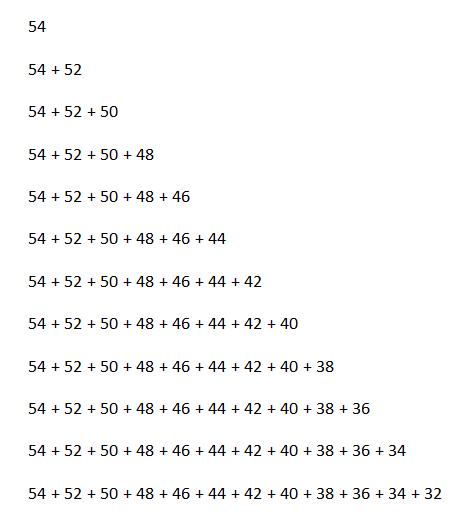
6 minute read
DRIP CAMPAIGNS
When a prospect doesn’t buy what you sell, how many times do you follow up with them?
Small business owners focus primarily on generating leads. But remember that on average, less than 1% of prospects are nowbuyers. 99% are not ready to purchase that day, but many of them will buy sometime in the future if you continue to nurture them by staying in touch on an ongoing basis.
Unfortunately, most small business owners rarely if ever follow up with their prospects after their initial contact with them. So why is that important? Listen to this very carefully! Over 80% of all sales occur between the 5th and 12th point of contact between the business and the prospect. 80%!!! Are you starting to see an opportunity here? This is where you need to implement a drip campaign.
A drip campaign can add significant revenue to your business. It automatically delivers a form of communication to customers or prospects on a predetermined and scheduled basis. But here’s the really cool part about this. Once you create your compelling offer, all you do is take specific segments from that offer and send it to your prospects on a consistent basis.
Let me show you an example of how this was done for a client who owned a sunroom company. When homeowners consider
any type of remodeling project, whether it’s their kitchen, an updated bathroom, or in this case installing a sunroom, wouldn’t they love to get their hands on what you might call an idea guide featuring various models or state-of-the-art concepts?
Let me show you the idea guide developed for this sunroom
company.







Pretty impressive, wouldn’t you agree? Well, would you like to hear the sad thing about this type of informational offer? Most prospects don’t read it. They will request it with every intention of reading it, but only about 20% of them will. That’s ok though, because it has already done its job, which was to compel the prospect to give us their contact information so we can begin our
5 to 12 touch points. And we simply use the information in the Idea Guide to do that quickly, efficiently, and inexpensively.
Here are a few examples for the sunroom company.


Notice in the Idea Guide it starts out listing the 7 benefits of owning a sunroom. Benefit number one – enjoy the outdoors 365
days a year. Obviously, that’s a huge reason someone would buy a sunroom, but unfortunately, 80% of prospects won’t read that. So, let’s reintroduce that benefit in our drip campaign and drive it home to the prospect. This sunroom company did that using a 6 X 11 oversized postcard, but they could have also done it through email.
Here’s the postcard they sent out that emphasized this benefit.



Notice benefit number 4 says owning a sunroom recharges your solar batteries.


Here’s the postcard that emphasizes that benefit.




Benefit number 5 is major. It educates prospects on how a sunroom increases the value of their home. So, this postcard reinforces that fact.




But my point in showing you these is to emphasize that once you create your compelling informational offer, you pretty much have everything you need to implement your drip campaign. But look what begins to happen from the first day you start your drip campaign.
Let’s discuss a child psychologist to show you the true impact of a drip campaign. If the child psychologist generates 300 leads per month, conservatively speaking they would average 60 prospects who would opt-in for the informational offer, and 6 of those 60 would become patients. So, that means 54 prospects did NOT buy their services.
Those are the prospects who now begin receiving the doctor’s drip campaign. Out of those 54 prospects, an additional 2 of them will typically buy in the next 30 days. This is a pattern that continues month after month for as long as the doctor continues to stay in touch with these prospects and continues to offer them value. Every month 54 new prospects go into the top of the doctor’s “funnel,” and 2 additional sales per 54 prospects continues to be delivered from the bottom of the funnel.
Here’s what the numbers look like over the first year.


At the end of year one, the doctor will have generated 3640 new prospects and 72 new clients through a squeeze page. But then the doctor produced a staggering 156 new clients through a drip campaign. And that’s just year one!
This growth pattern continues year after year for as long as the doctor maintains this sales process. But here’s the problem. By month 12 of year one, the doctor is generating 30 NEW patients
every month. Is that a number this doctor can handle logistically? There’s a limit on the number of patients this doctor can reasonably handle. When that number is reached, this doctor can stop all lead generation efforts and let the drip campaign continue to produce additional patients far into the future.
Now let’s calculate how this strategy will conservatively impact your business. Remember, 80% of sales take place only after 5 to 12 points of contact and none of your competitors are doing anything like this whatsoever. Since you will be the only one in your market with this in place, you can logically expect to see a dramatic increase in both sales and conversions.
However, for the purpose of today’s exercise, let’s stay extremely conservative and calculate just a 10% conversion rate for your drip campaign. What were your total sales revenue last year? Whatever your number is, take 10% of that total. That’s an ultra-conservative estimate of what a drip campaign can easily produce for your business over the next 12 months. That conservative amount can
easily double each year, year after year, for as long as you keep your drip campaign in place. That’s pretty exciting, isn’t it?





